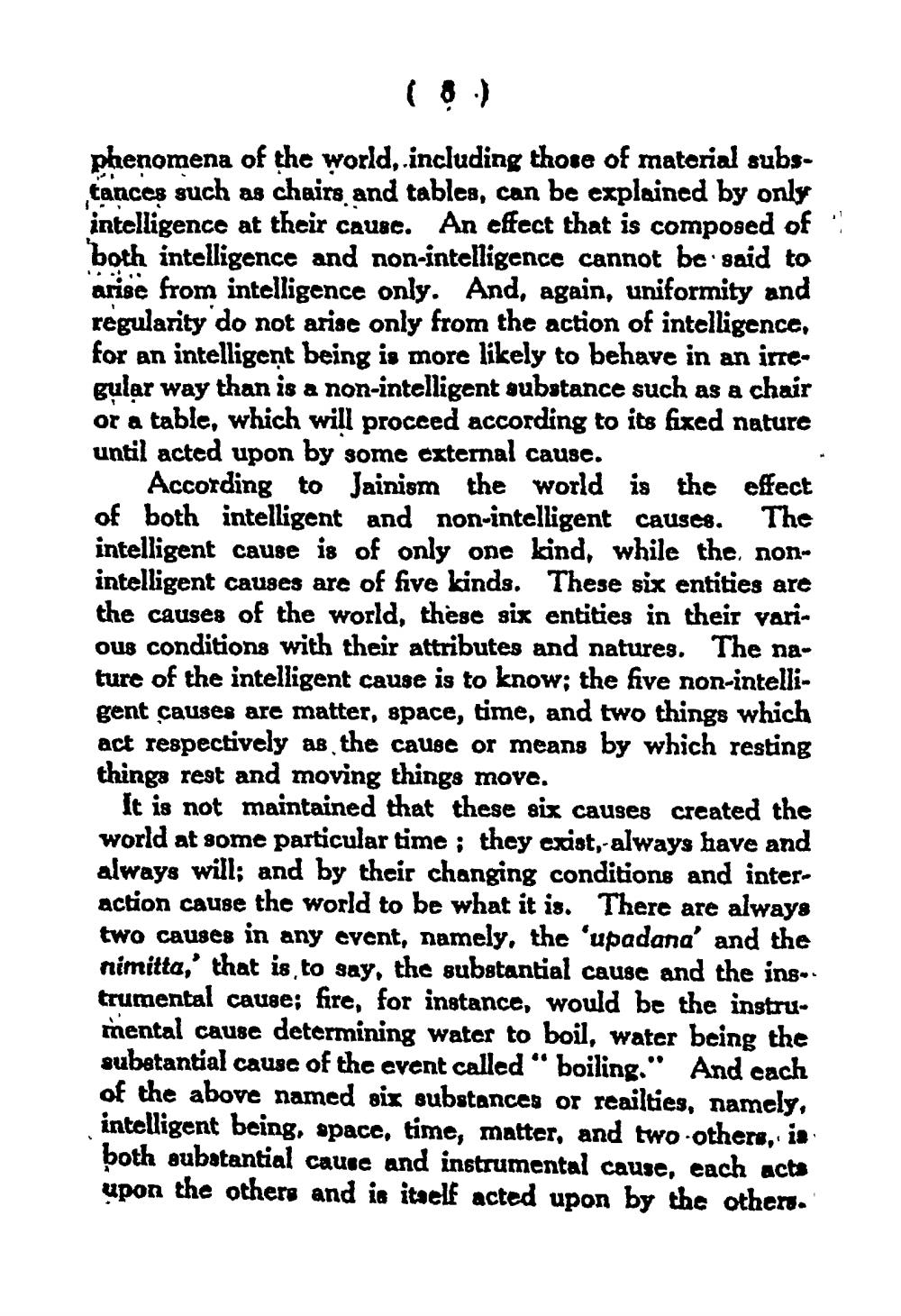________________
phenomena of the world, including those of material substances such as chairs and tables, can be explained by only intelligence at their causc. An effect that is composed of both intelligence and non-intelligence cannot be said to arise from intelligence only. And, again, uniformity and regularity do not arise only from the action of intelligence, for an intelligent being is more likely to behave in an irregular way than is a non-intelligent substance such as a chair or a table, which will proceed according to its fixed nature until acted upon by some external cause.
According to Jainism the world is the effect of both intelligent and non-intelligent causes. The intelligent cause is of only one kind, while the, nonintelligent causes are of five kinds. These six entities are the causes of the world, these six entities in their various conditions with their attributes and natures. The nature of the intelligent cause is to know; the five non-intelligent causes are matter, space, time, and two things which act respectively as the cause or means by which resting things rest and moving things move.
It is not maintained that these six causes created the world at some particular time; they exist, always have and always will; and by their changing conditions and interaction cause the world to be what it is. There are always two causes in any event, namely, the 'upadana' and the nimitta,' that is to say, the substantial cause and the ing. trumental cause; fire, for instance, would be the instrumental cause determining water to boil, water being the substantial cause of the event called “boiling." And each of the above named six substances or reailties, namely, intelligent being, space, time, matter, and two others, is both substantial cause and instrumental cause, each acts upon the others and ia itaelf acted upon by the others.'




